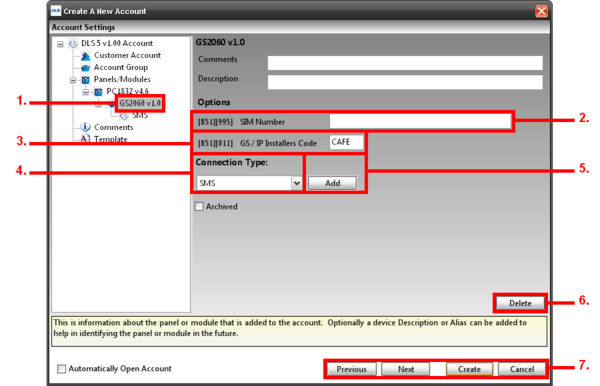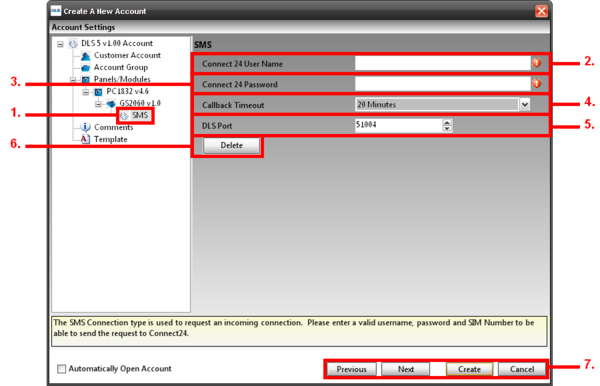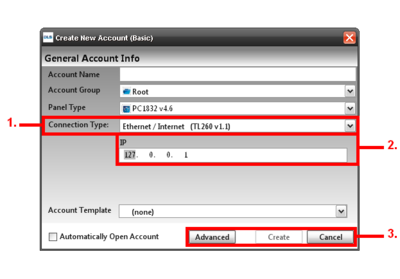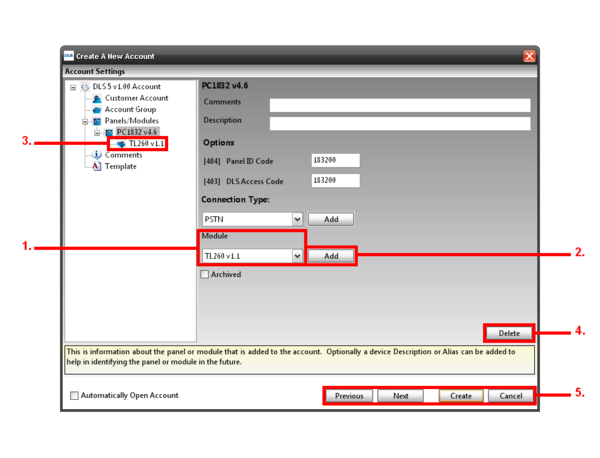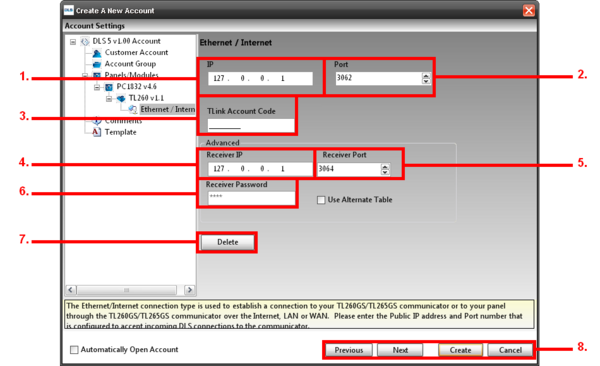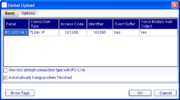Windows Troubleshooting
Contents
DLS 5 access through firewall
Through Windows XP
1. Go to your Control Panel and select "Windows Firewall"
2. Select the "Exceptions" Tab then press "Add Program" and locate DLS 5 and add the program.
Through Windows 7
1. Go to your Control Panel and select "System and Security".
2. Under Windows Firewall window select "Allow a program or feature through Windows Firewall"
3. Make sure "Change Settings" has been applied, this will now make "Allow another program" available. Select the button and locate DLS 5 and add the program.
Adding port 51004
Through Windows XP
i. Control Panel -> Windows Firewall Settings -> Exceptions Tab -> Add Port -> Name it DLS IV Port and add the number 51004 under “Port numberâ€
Through Windows 7
i. Control Panel -> System and Security -> Windows Firewall -> (Left Side of the Window) Advanced Settings -> Inbound Rules -> New Rule -> Port -> Specific local ports: 51004 -> Allow the connection -> Checkmark all rules -> Name (e.g. DLS IV Port) *Apply the same options for Outbound Rules
SMS (GS2060/GS2065 or TL260GS/TL265GS)
An SMS message is sent to the wireless GSM module to trigger a return connection to the waiting DLS 5 client. To use this connection, the SIM number is used as the unique Identifier. Ensure the full SIM number is entered.
One key advantage of using the SMS connection type is that there is NO PORT FORWARD required on the installation. Instead, there is a single port forward required on the DLS 5 PC's network to allow the incoming connection from communicator module.
There is a noticeable amount of time required to connect via SMS connection type. This is due to the delays introduced at each juncture of the connection process. Please be patient, connection times of 2-5 mins are normal.
For more information, see these articles:
Basic SMS (GS2060/GS2065 or TL260GS/TL265GS)Setup
1. Connection Type: Under “Connection Typeâ€, make sure “GS2060†this will prompt up new options
2. Connect 24 User Name: Add the “Connect 24 User Name†you used to register with Connect 24
3. Connect 24 Password: Add the “Connect 24 Passwordâ€. you used to register with Connect 24
4. Advanced: Click on “Advanced†to go to the advanced options for the GS2060.
Advanced SMS (GS2060/GS2065 or TL260GS/TL265GS)Setup
1. GS2060 v 1.0: Under the DLS 5 Account heading on the left side, select GS2060 v 1.0 this will bring up the GS 2060 advanced options.
2. SIM Number: This would be the subscriber identity module (SIM) number that is found on the SIM card for the GS2060 to communicate.
3. GS/IP Installers Code: The password required to connect to the GS2060 Console, by default the password should be “CAFEâ€.
4. Connection Type: The type of connection the GS2060 will use to connect; SMS is the only options for the GS2060
5. Add: This will bring the SMS options.
6. Allows you to remove the SMS connection from the panel
7. This will allow you to create/cancel or go to the next/previous section.
SMS Setup(GS2060/GS2065 or TL260GS/TL265GS)
1. SMS: Under the DLS 5 Account heading on the left side, select SMS this will bring up the GS SMS options.
2. Connect 24 User Name: Add the “Connect 24 User Name†you used to register with Connect 24.
3. Connect 24 Password: Add the “Connect 24 Passwordâ€. you used to register with Connect 24.
4. Callback Timeout: The amount of time allowed for the GSM to do a call back.
5. DLS Port: The port that the GS2060 would be using for communication, the default port should be 51004.
6. Delete: Allows you to remove the SMS connection from the panel.
7. This will allow you to create/cancel or go to the next/previous section.
Ethernet/Internet (TL260GS/TL265GS)
This connection type is NEW to DLS IV, and is DLS IV's fastest connection. Global upload and download times are reduced to seconds with this connection type.
An "Ethernet/Internet" connection is a direct connection to the installed TL260GS/TL265GS communicator. This will require a port is available on the install-site end to accept the direct connection.
To use this connection type, you will need:
- The TL260GS/TL265GS must already be configured with an IP and have a connection to the internet
- TL260GS/TL265GS Installer Code
- Panel's DLS Access Code (if panel sections are included in the communication job)
- EXTERNAL IP & Port of the TL260GS/TL265GS that is configured to allow incoming connections to the module
This connection type does NOT backup to the GPRS (wireless) channel if the Ethernet connection fails.
Basic TL260/260R/2603GR/265 Setup
There are two ways to add a TL 260 to your panel:
1st Method
1. Connection Type: Under “Connection Typeâ€, make sure “TL 260†is selected, this will prompt up new options to
add the “IP addressâ€.
2. IP: Enter the public IP address of the T Link module that is being used.
3. Advanced: Click on “Advanced†to go to the advanced options for T Link 260.
2nd Method
1. Module: Under “Moduleâ€, make sure it is set to “TL260â€.
2. Add: Click “add†to add the module under your panel.
3. TL 260 v1.1: It will now show up under your panel drop down list.
4. Delete: Allows you to remove the TL 260 module from the panel.
5. This will allow you to create/cancel or go to the next/previous section.
Advanced TL260/260R/2603GR/265GS Setup
1. GS/IP Installer Code: The password required to connect to the T Link Console Software, by default the password should be “CAFEâ€.
2. Connection Type: The type of connection the T Link will use to connect; Ethernet/Internet is the only option for the TL 260.
3. Add: Click “add†in order for the “Ethernet/Internet†connection type to be added under the TL 260.
4. Ethernet/Intern: This connection type will be added under the panel drop down list, when selected it will take you to the advance TL 260 programming.
5. Delete: Allows you to remove the Ethernet/internet connection from the panel.
6. This will allow you to create/cancel or go to the next/previous section.
TL260/260R/2603GR/265 IP Setup
1. IP: This would be the IP Address of the T Link in order to communicate.
2. Port: The port that the T Link would be using for communication, the default port should be 3062.
3. T Link Account Code: This would be the account number of the T Link module that the central station would be receiving.
4. Receiver IP: This would be the IP Address of the receiver that the T Link communicates to.
5. Receiver Port: This would be the Port of the receiver that the T Link communicates to, the default port is 3064.
6. Receiver Password: Only used if Central Station requires it.
7. Delete: Allows you to remove the Ethernet/internet connection from the panel.
8. This will allow you to create/cancel or go to the next/previous section.
Connecting to the Panel
First you must choose the desired communications operation (Global upload, Global Download, Communicate Tags, etc).
Once you have selected the type of communication operation, a screen will appear with 3 tabs prompting you with different options.
Under the "Basic" tab, you can verify the panel you are connecting to, the type of connection you will be making, the access code and the ID code. Depending on which communications operation you select you might also have an option to "auto-detect modules" and whether you would like to upload the event buffer.
There is also a button "Show Tags". This will display for you exactly which sections have been tagged for communications.
Under the "Options" tab you can turn on/off the double call feature. You can also specify the double call timer and the double call duration.
Upload Event Buffer
If you would like to upload the event buffer, without upload or downloading any other sections, you can select "Upload Event Buffer" from the toolbar.
Module Auto-Detect
If you would like to find out what modules are enrolled on the system, without uploading or downloading any programming sections, you can select the "Module Auto-Detect" function from the toolbar.



